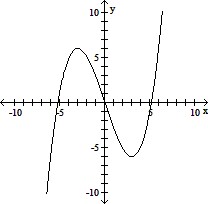Use the multiplication property of inequality to solve the inequality and graph the solution set on a number line. > 2
> 2
A. (6, ?)![]()
B. (-?, 6)![]()
C. [6, ?)![]()
D. (-?, 6]![]()
Answer: A
You might also like to view...
Determine whether the sequence converges or diverges, and, if it converges, find  an.an = 1 + (-1)n + (-1)n(n+1)
an.an = 1 + (-1)n + (-1)n(n+1)
A. 3 B. 1 C. 0 D. Diverges
Use the graph of the function f(x) to locate the local extrema and identify the intervals where the function is concave up and concave down.
A. Local minimum at x = 3; local maximum at x = -3 ; concave up on (0, -3) and (3, ?); concave down on (-3, 3) B. Local minimum at x = 3; local maximum at x = -3 ; concave up on (0, ?); concave down on (-?, 0) C. Local maximum at x = 3; local minimum at x = -3 ; concave up on (0, -3) and (3, ?); concave down on (-3, 3) D. Local minimum at x = 3; local maximum at x = -3 ; concave down on (0, ?); concave up on (-?, 0)
Find the sum Sn of the first n terms of the geometric sequence.  ,
,  ,
,  ,
,  ,
,  , . . . ; n = 12
, . . . ; n = 12
A. 132857
B. 132859
C. 
D. 132860
Evaluate the integral.
A. 24 sin x + 24x cos x + C B. 24 sin x - 24 cos x + C C. 24 sin x - x cos x + C D. 24 sin x - 24x cos x + C